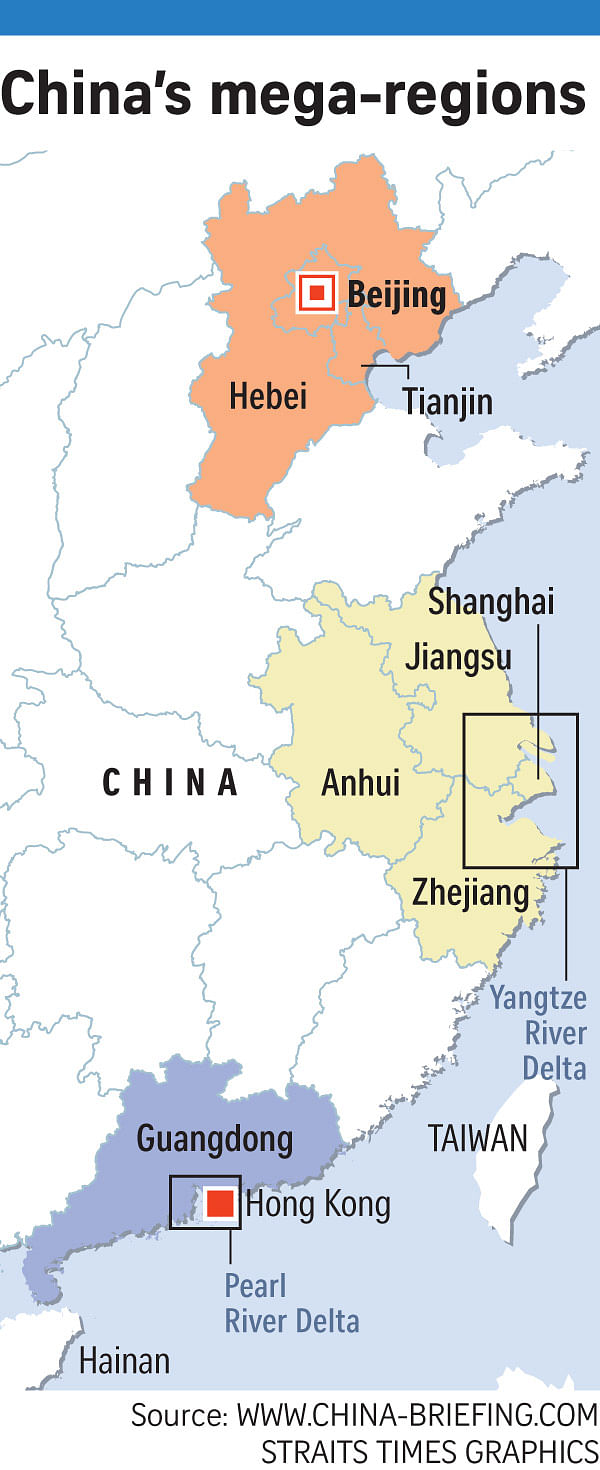The integration of China's capital Beijing, Tianjin port city and neighbouring Hebei province through improved transport links will serve as a model for other city clusters in the country, China's top economic planner has said.
With better rail connections, functions that are non-essential to Beijing will be transferred out of the capital city in an effective and orderly way, said Mr He Lifang, head of the National Development and Reform Commission (NDRC).
"This will help cure the megacity syndrome," he said, referring to the problems that Beijing faces, such as air pollution, water shortage and traffic congestion.
China's integration development plan for the greater capital region in the north could be a model for other parts of the country such as the Yangtze River Delta, the Chengdu-Chongqing City Cluster, the Central Plain City Cluster and the Pearl River Delta, Mr He said at his first meeting with the media since his appointment to the top post last month.
With this experience, China will be able to offer a "holistic solution to other megacities in the world", he said.
-
Greater Bay Area to vie with global rivals
-
China's plan to deepen integration between Hong Kong and the mainland is to create a region to rival other global bay areas, the governor of southern Guangdong province said.
The aim of the Greater Bay Area is to "compete with bay areas in Los Angeles, New York and Tokyo bay," Mr Ma Xingrui told the Guangdong delegation during a meeting as part of the annual session of the National People's Congress yesterday.
Premier Li Keqiang said on Sunday that China would "draw up a plan for the development of a city cluster in the Guangdong-Hong Kong-Macau Greater Bay Area".
This will give "full play to the distinctive strengths of Hong Kong and Macau, and elevate their positions and roles in China's economic development and opening up," Mr Li said during his 100-minute delivery of the government's work report.
Mr Ma also said yesterday that the plan will cover social and economic cooperation to improve connectivity within the region, and it will also include environmental and transport issues.
The Guangdong provincial government has commissioned a think-tank to further study the initiative, he added.
Chong Koh Ping
Mr He was speaking at a press conference together with his two deputies on the sidelines of the annual session of the National People's Congress, or China's Parliament.
One of his deputies, Mr Ning Jizhe, said China will keep prices stable this year, and will continue to cut excess steel capacity next year. According to NDRC's work report, China will cut its steel capacity by 50 million tonnes and coal production by at least 150 million tonnes this year.
Mr Ning noted that China produces an excess of 300 million tonnes of steel every year. Even with the 65 million tonnes of cuts achieved last year, coupled with the 50 million tonne target this year, it will still have to press ahead with cutting overcapacity next year.
Other than reforms, the government will also take steps to ensure that innovation and entrepreneurship could be a strong driver of growth for the economy, Mr Ning told reporters.
Last year, 150,000 new companies were set up every day, bringing the total number of registered businesses to 87 million by the end of the year.
These businesses have created new products and services to help satisfy a wide range of demands, according to Mr Ning.
He said that the government will cut red tape and provide better administrative support to help ensure the vitality of new businesses.
It will also build a new batch of innovation centres to provide a conducive environment for start-ups. Companies will also be encouraged to invest more in research and development.
Besides nurturing emerging industries like companies involved in the sharing economy, such as ride-sharing services or short-term rentals, the government will also speed up efforts to help traditional industries transform, upgrade and move up the value chain, Mr Ning said.
"We are now at a stage where we are talking about quality, technology, standards, branding and intellectual property rights. This is how we can strengthen the core competitiveness of our companies," he added.

